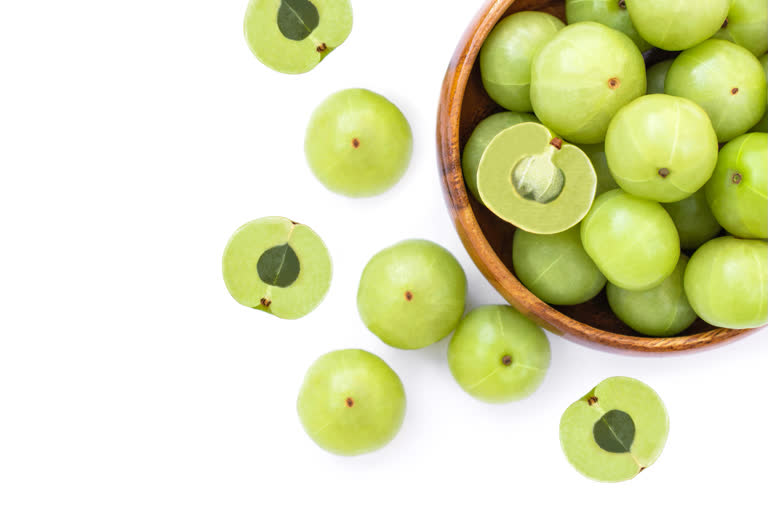Amla is one of the most used herbs in Ayurveda, considering the several health benefits it provides and the plethora of nutrients it contains. It is a sour, light green, translucent juicy fruit. It is rich in vitamin C and has lots of antioxidants. Amla can be consumed independently or can be combined with other herbs and used. Not just as a medicine, but amla is also used as a supporting dish in Indian cuisine. Amla chutney, amla pickle, amla murabba, etc. are some of the most common forms in which amla is used in the Indian kitchen. To understand other forms in which amla is available and its side benefits, the Etv Bharat Sukhibhava team spoke to Dr. Ranganayakulu, Ph.D. in History of Ayurveda, and here is what he explains.
Forms Of Amla
Amla is available in various forms in which it can be consumed. Dr. Ranganayukulu explains that amla is grown and cultivated in all parts of India. Fresh as well as dried amla fruit is available in the market. Finished products like Amalaki churna (powder), Kashaya & kvatha (decoction), avaleha (semisolid preparation like Chyavanaprasha lehyam), taila (oil), ghrit (Ghee), and arista (fermented liquid) forms are available in Ayurveda medical shops. It is also one of the ingredients in the Triphala churna.
Side Benefits
Dr. Ranganayakulu explains that apart from treating a particular health condition, like anaemia, jaundice, diabetes, hyperacidity, etc., consumption of amla has other side benefits as well.
- It normalizes blood pressure
- Reduces oxidative stress
- Neutralizing free radicals
- Protection from cancer
- Reducing high cholesterol
- Reduces inflammation, alleviates pain
- Cools the body
- Supports sound sleep
- Fights stress
- Reduce skin and hair problems
- Heals gastrointestinal disorders
- Strengthens bones
- Purifies blood
- Rejuvenates
- Supports the liver
- Promotes longevity
Therefore, amla is a safe herb and doesn’t have any side effects as such and rather has side benefits. However, it is always recommended to consult your doctor if you are consuming it as a medication, especially if you are suffering from a complicated health condition. Its long term use can affect the stomach, thus be careful and avoid overconsumption.
Currently, while the world is fighting the COVID-19 pandemic, immunity is one of the key factors that decide to what extent a person may be affected by the virus. Thus, alma being very rich in vitamin C works as an excellent immunity booster. Amla in any form will be beneficial for the same.



